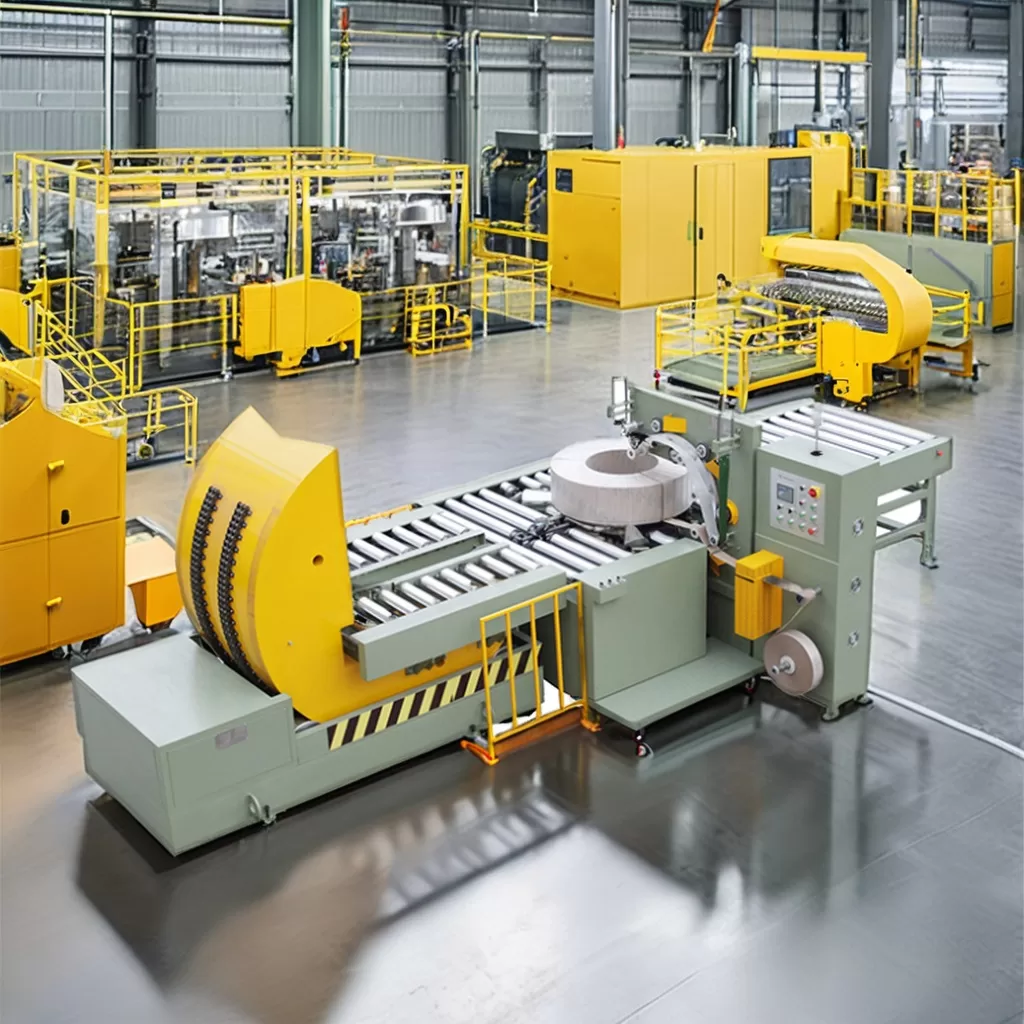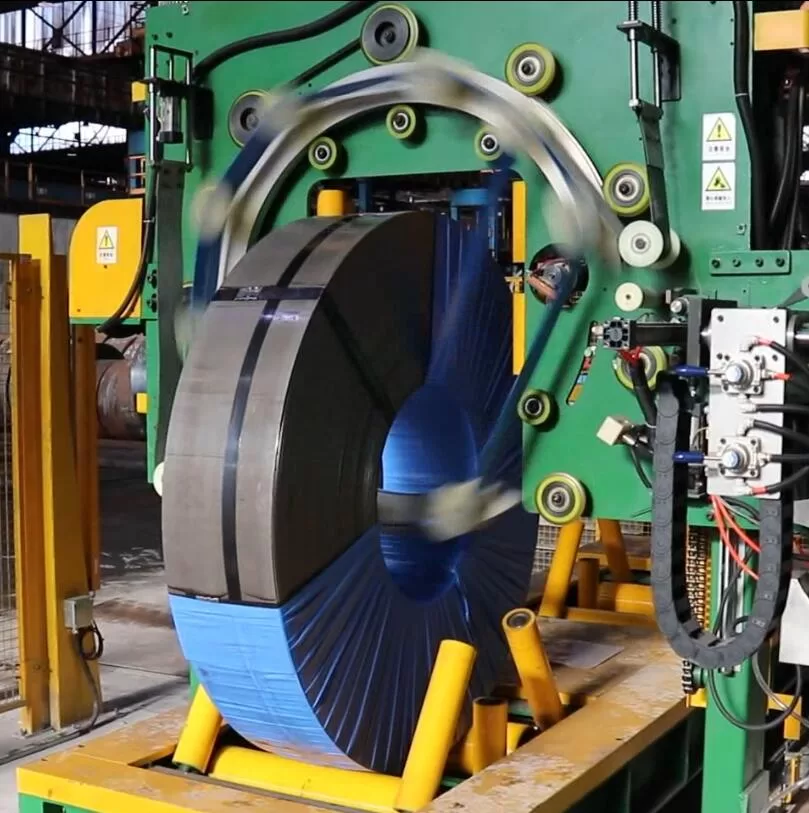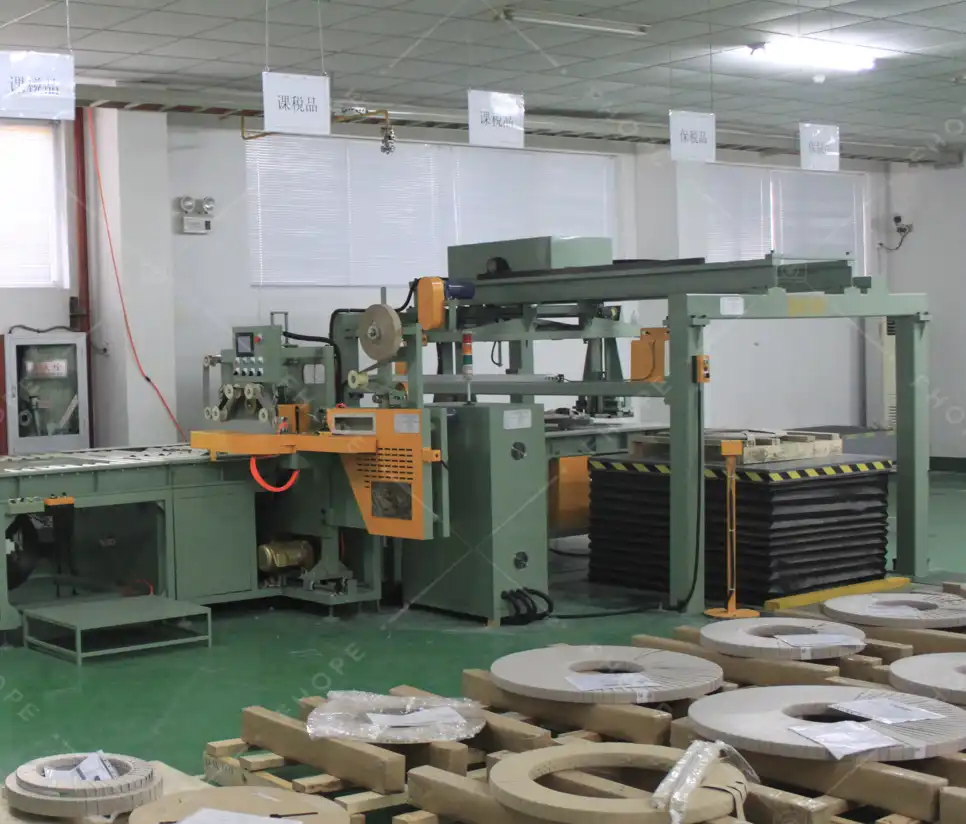1. The Importance of Safe Packaging for Steel Coils
Exporting steel coils involves significant logistical challenges. Safe and effective packaging is paramount, not just an afterthought. It serves as the primary defense for valuable steel coils against the rigors of international transit. Improperly packaged coils are vulnerable to:
- Physical Damage: Dents, scratches, edge damage, or coil deformation during handling and transport.
- Corrosion: Rust formation due to exposure to moisture, humidity, or saline environments, especially during sea freight.
- Contamination: Dirt, debris, or chemical contaminants compromising the steel's quality.
These issues can lead to customer rejection, costly claims, project delays, and damage to your business reputation. Furthermore, secure packaging is crucial for worker safety during loading, unloading, and handling processes, minimizing the risk of accidents involving these heavy items. Adhering to robust steel coil packaging standards protects your investment and ensures customer satisfaction.
2. Key International Packaging Standards for Exported Steel Coils
Compliance with international packaging standards is non-negotiable for smooth export operations. Several organizations establish guidelines crucial for steel coil shipments:
- International Maritime Organization (IMO): Through the International Convention for the Safety of Life at Sea (SOLAS) and the Code of Practice for Packing of Cargo Transport Units (CTU Code), the IMO mandates secure stowage and transport practices to prevent cargo shifting and ensure vessel stability.
- International Organization for Standardization (ISO): While ISO 9001 outlines quality management systems applicable to packaging processes, other specific standards might cover materials or testing methods relevant to packaging integrity.
- International Plant Protection Convention (IPPC): If using wood packaging materials (e.g., pallets, cradles), compliance with ISPM 15 is mandatory, requiring treatment (heat or fumigation) to prevent pest spread. Documentation proving compliance is essential.
Adherence ensures not only the physical safety of the steel coils but also legal compliance, avoiding potential fines, delays, or shipment rejections at international ports. Familiarity with these international steel coil packaging regulations is vital for exporters.

3. Packaging Materials and Methods for Optimal Protection
Selecting appropriate packaging materials and methods is critical for safeguarding steel coils during export. The choice depends on the coil type, destination, and mode of transport. Common effective materials include:
- Vapor Corrosion Inhibitors (VCI): VCI paper or VCI film releases harmless anti-corrosion vapors that form a protective molecular layer on the steel surface, crucial for preventing rust, especially during long sea voyages. This is a cornerstone of steel coil corrosion protection.
- Protective Wraps: Materials like stretch film, polyethylene (PE) film, or woven plastic fabric provide a barrier against moisture, dust, and physical abrasion.
- Edge Protectors: Made from heavy-duty cardboard, plastic, or metal, these protect coil edges from damage caused by strapping tension and handling impacts.
- Steel Strapping: High-tensile steel bands offer maximum strength for securing heavy coils, preventing movement. Galvanized options provide extra corrosion resistance.
- Polyester (PET) Strapping: A strong, safer alternative to steel, PET strapping offers high retained tension and flexibility, absorbing impacts without breaking easily.
- Outer Protection: Hardboard sheets, metal shells (full or partial), or custom-designed steel frames can provide robust external protection against impacts.
Common Packaging Methods:
- Eye-to-Sky Packaging: Coils are placed with the hole facing upwards, typically on pallets or skids, wrapped, and strapped.
- Eye-to-Wall Packaging: Coils are positioned with the hole parallel to the ground, often secured in cradles or saddles, then wrapped and strapped.
- Automated Coil Wrapping: Modern steel coil packing machines automate the wrapping process using stretch film or VCI materials, ensuring consistent tension and coverage for optimal protection.

steel coil packing line(1) 4. Ensuring Compliance with International Shipping Regulations
Beyond general standards, exporters must navigate specific international shipping regulations related to customs, safety, and documentation. Key considerations include:
- Load Securement: Adhering to regulations like the CTU Code ensures coils are properly blocked, braced, and secured within containers or on flatbeds to prevent shifting during transit. Improper securement is a major cause of accidents and damage.
- Documentation: Accurate and complete shipping documents are vital. This includes the Bill of Lading, Commercial Invoice, Packing List (detailing weight, dimensions, and packaging type), and any required certificates (e.g., ISPM 15 certificate for wood, Mill Test Certificate for the steel).
- Customs Requirements: Each destination country has unique import regulations. Research and comply with requirements regarding duties, taxes, and specific packaging declarations to avoid delays or seizures.
- Weight Limits: Be aware of road, rail, and container weight restrictions in origin, transit, and destination countries. Overloaded shipments can face severe penalties.
Partnering with experienced freight forwarders can help navigate these complex steel coil export packaging regulations effectively.
5. The Role of Moisture Protection in Steel Coil Packaging
Moisture is the primary enemy of steel during transit. Effective steel coil corrosion protection strategies are essential:
- VCI Technology: As mentioned, VCI materials (paper, film, emitters) are highly effective. They work by saturating the enclosed air space with protective molecules, neutralizing corrosive agents like moisture and salt.
- Barrier Films: Impermeable wraps (like PE film or foil laminates) create a physical barrier against external moisture ingress. Ensure seals are tight.
- Desiccants: Absorbent materials like silica gel or clay desiccants can be placed within the packaging to absorb trapped moisture. Calculate the required amount based on package volume, transit time, and expected conditions.
- Waterproof Outer Layers: Using waterproof materials for the outermost layer adds an extra level of defense against rain or sea spray.
Combining these methods provides multi-layered protection, critical for maintaining the steel's quality, particularly for sensitive products like coated or cold-rolled coils.
6. Customizing Packaging Solutions for Different Types of Steel Coils
A one-size-fits-all approach rarely works for steel coil export packaging. Solutions must be tailored based on:
- Coil Type and Finish: Hot-rolled, cold-rolled, galvanized, pre-painted, or stainless steel coils have different surface sensitivities and protection needs. Coated steels often require softer inner wraps to prevent scratches.
- Coil Size and Weight: Heavier, larger coils demand stronger strapping, more robust edge protection, and potentially specialized skids or cradles for support and handling.
- Mode of Transport: Packaging for sea freight needs enhanced corrosion protection compared to shorter land transit. Air freight might prioritize weight reduction.
- Destination Climate: Shipments to humid or coastal regions require more rigorous moisture protection measures.
- Customer Requirements: Specific customers may have unique packaging specifications that must be met.
Developing a customized packaging plan ensures optimal protection and cost-effectiveness for each specific export shipment.
7. Best Practices for Securing Steel Coils During Transit
Properly securing steel coils for transport is vital for safety and damage prevention. Key best practices include:
- Correct Loading Orientation: Load coils according to recommended practices (eye-to-sky or eye-to-wall) based on transport mode and equipment.
- Appropriate Dunnage: Use suitable cradles, saddles, or specialized skids designed to support the coil's shape and weight, preventing rolling or direct contact with the transport floor.
- Blocking and Bracing: Securely block coils using timber or specialized bracing systems within containers or on flatbeds to eliminate movement in all directions (forward, backward, sideways).
- Proper Strapping Techniques: Apply strapping (steel or PET) with correct tension using calibrated tools. Use edge protectors to prevent strap damage to the coil. Ensure straps are positioned correctly to effectively restrain the coil.
- Weight Distribution: Distribute the weight of multiple coils evenly within the container or on the vehicle according to transport regulations (e.g., axle weight limits).
- Container Inspection: Ensure the shipping container is structurally sound, clean, and dry before loading.
Following these safe steel coil shipping practices minimizes the risk of load shifts, damage, and accidents.
8. Environmental Considerations for Sustainable Steel Coil Packaging
Sustainability is increasingly important in global logistics. Implementing sustainable steel packaging practices can enhance brand image and meet regulatory pressures:
- Recyclable Materials: Prioritize materials that are easily recyclable, such as steel strapping, PET strapping, cardboard edge protectors, and certain types of plastic films (check local recycling capabilities).
- Reusable Packaging: Explore options for reusable steel frames, cradles, or covers where feasible, particularly in closed-loop supply chains.
- Source Reduction: Optimize packaging design to use the minimum amount of material necessary while maintaining protection integrity (lightweighting).
- Biodegradable Options: Investigate biodegradable VCI materials or wraps where performance meets requirements.
- Responsible Sourcing: Choose suppliers who demonstrate commitment to sustainable practices, such as using recycled content in their packaging materials.
Balancing protection needs with environmental responsibility is key for modern steel coil export packaging.
9. Choosing the Right Packaging Supplier for Steel Coil Exports
Selecting a knowledgeable and reliable packaging supplier is a critical step. Consider the following factors:
- Expertise in Steel Packaging: Look for suppliers with proven experience and understanding of the unique challenges of packaging steel coils for export.
- Product Range and Quality: Ensure they offer a comprehensive range of suitable materials (VCI, wraps, strapping, edge protectors) that meet international quality standards.
- Customization Capabilities: The ability to provide tailored solutions based on specific coil types, sizes, and destinations is essential.
- Regulatory Knowledge: Choose a supplier familiar with international shipping regulations (IMO, ISPM 15) and who can provide compliant materials.
- Technical Support: Valuable suppliers offer technical assistance in selecting the right materials and optimizing packaging designs.
- Reliability and Service: Consistent supply, on-time delivery, and responsive customer service are crucial for uninterrupted operations.
A strong supplier partnership contributes significantly to the success of your safe steel coil shipping strategy.
10. Reducing Costs Without Compromising on Packaging Quality
While robust packaging is essential, cost management is always a factor. Strategies to optimize steel coil packaging costs without sacrificing protection include:
- Packaging Optimization: Analyze current packaging designs. Can material usage be reduced through smarter application or slightly different materials without compromising safety? Automation can often lead to more efficient material use.
- Total Cost Perspective: Evaluate packaging based on total cost of ownership, not just material price. Factor in the potential costs of damage, claims, delays, and reputational harm resulting from inadequate packaging. Investing slightly more in better packaging can prevent much larger losses.
- Supplier Negotiation: Explore bulk purchasing discounts or long-term agreements with reliable suppliers.
- Process Efficiency: Streamline the packaging process itself. Automated or semi-automated systems can reduce labor costs and improve consistency compared to manual methods.
- Material Evaluation: Regularly review new packaging materials or technologies that might offer comparable or better protection at a lower cost or with sustainability benefits.
Finding the right balance ensures cost-effectiveness while upholding the primary goal: delivering steel coils safely and compliantly.

Conclusion
Ensuring safe and compliant packaging for exported steel coils is a complex but vital process for any business operating in the global steel market. It requires careful consideration of materials, methods, international standards, regulations, moisture control, customization, securement, sustainability, and cost-effectiveness. By implementing best practices and partnering with knowledgeable suppliers, exporters can protect their valuable products during transit, ensure steel coil handling safety, maintain regulatory compliance, enhance customer satisfaction, and ultimately safeguard their bottom line. Prioritizing robust steel coil export packaging is an investment in the long-term success and reputation of your business.
